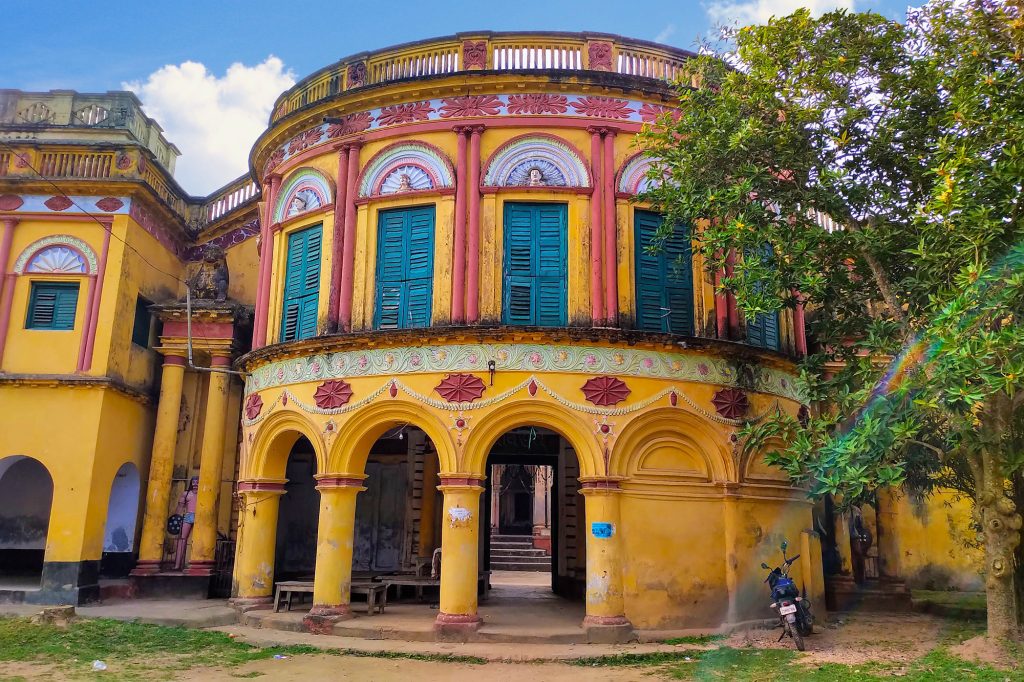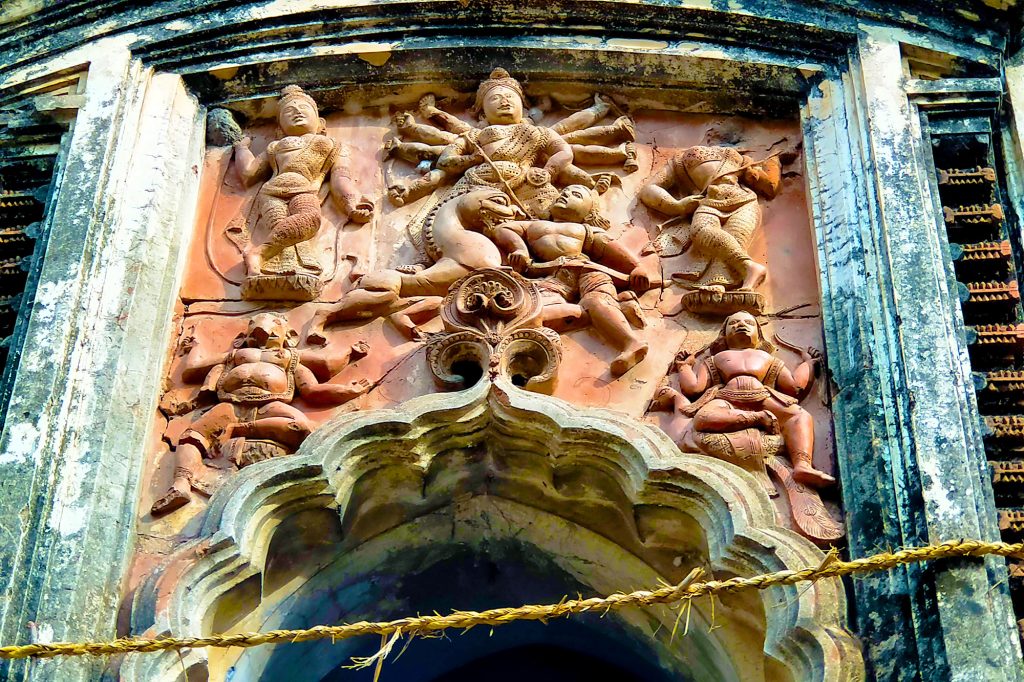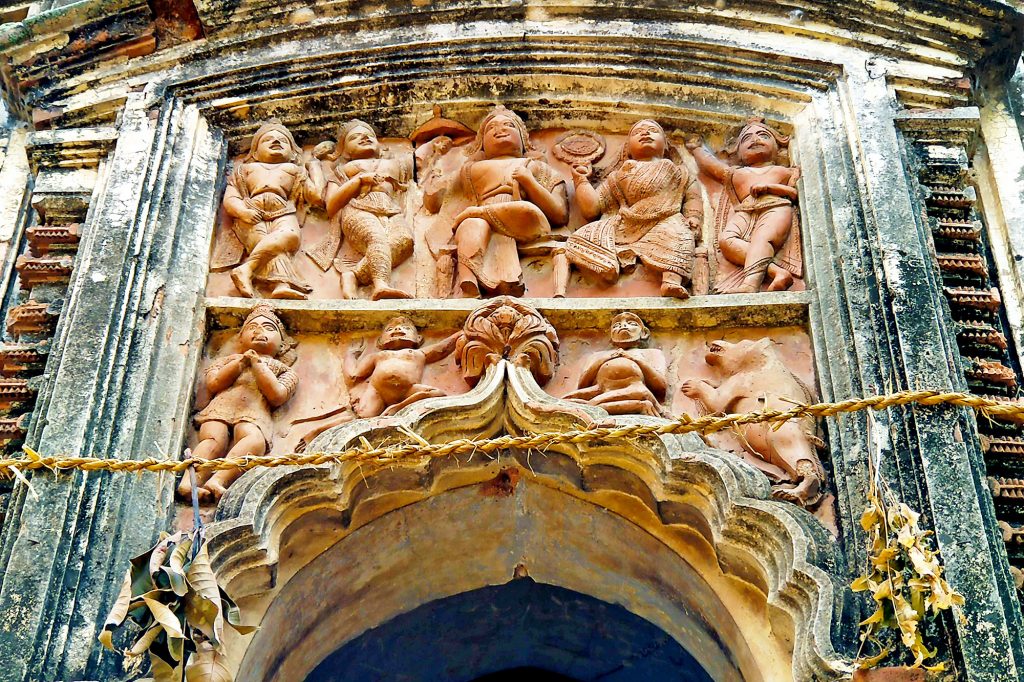Rasmancha of Hadal Narayanpur, Bankura
Kinjal Bose
The twin villages of Hadal Narayanpur located in Patrasayer block of Bishnupur subdivision of Bankura district of West Bengal has a number of terracotta temples and a beautiful saptadasratna (seventeen pinnacled) octagonal rasmancha.

A rasmancha is temple-like structure used during the Rashyatra on a full moon day held in the Bengali month of Kartick when the idols of Radha-Krishna are taken out from the main temple and placed here so that devotees at large can witness the deities. Compared to dolmancha, where the idols of Radha-Krishna are kept for a single day, but in rasmancha, the deities are placed for three days mainly after the evening. The manchas are situated within the temple compound. The walls of these temple-like structures may either have intricate terracotta decorations or stucco works or simply floral motifs.

The rasmancha of Baro-taraf of Mondal family of Hadal Narayanpur is simply unique in many respects. First of all it is one of the largest of its kind – double storied with a height of about 40 feet. Secondly, all the sides are decorated with rich terracotta works. Thirdly, it may seem from a distance that this tall structure looks like a temple. Fourthly, each corner of the rasmancha has sculptures depicting Gaja Lakshmi; Ram Sita; Krishna Radhika; Anantasayan Bishnu; Gostho-Lila; Mahisasuramardini Durga; Marriage of Shiva; Shiva Nandi-Bhringi.

Placed on a higher pedastal, this saptadasa rasmancha with “rekha turrets” was built in the year 1854. David McCutchion in his book “Brick Temples of Bengal” mentioned that Sibnarayan Mandal commissioned a person by the name of Narayan Sutradhar of Balsi to build a number of buildings including this spectacular rasmancha which, during those days, cost fourteen thousand rupees.

More or less the sculptures on the walls of the rasmancha are intact but care should be taken to protect it. It is a unique heritage structure. There was an old custom that during the days of Rashyatra all the shalagramshilas of the village were kept here for three days.
